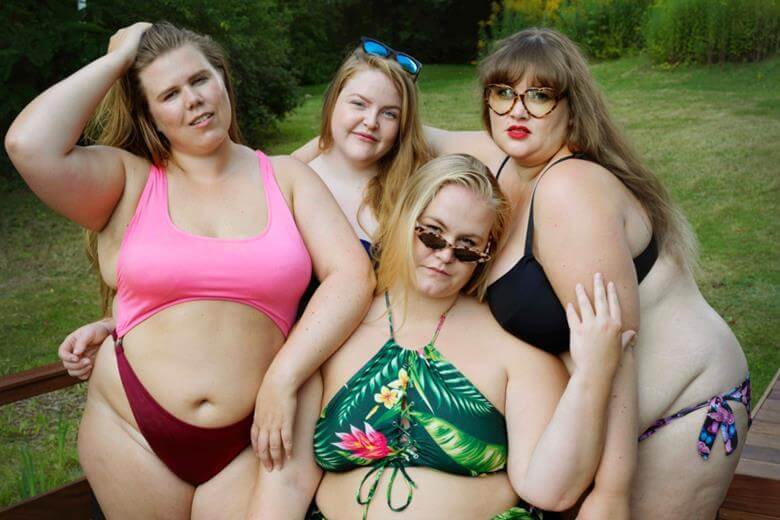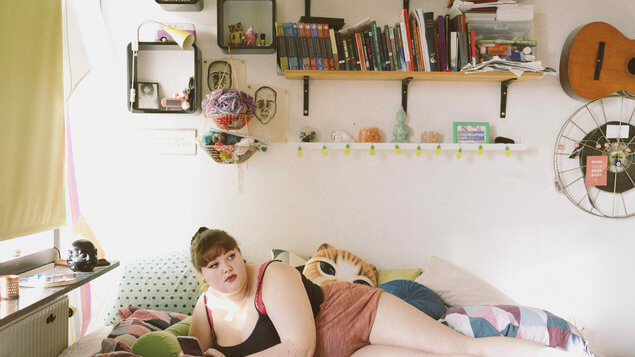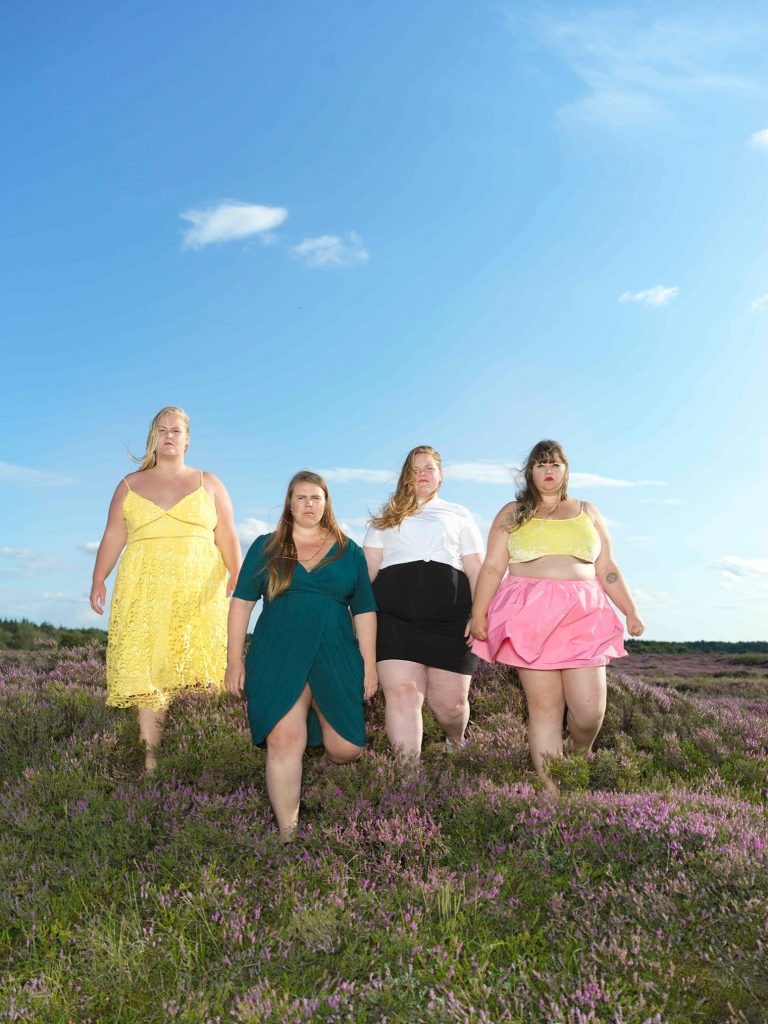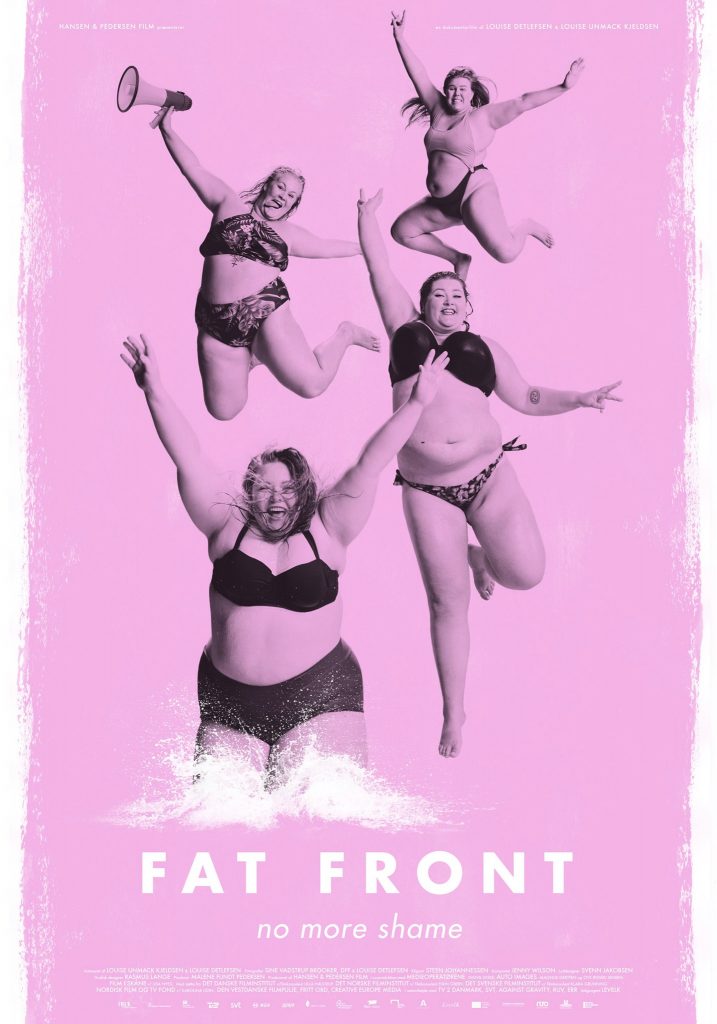‘Fat Front’: A Film By Louise Detlefsen & Louise Kjeldsen

Fat Front follows the lives of four overweight, Scandinavian women; Helene, Marte, Pauline and Wilde. These inspiring young people promote body positivity as they join the feminist fight against a fat-phobic world. Deltefsen and Kjeldsen’s documentary offers a safe space to explore the issues surrounding negative self-image, social media and gender. Together, they intend to challenge the heteronormative status-quo and dissect stereotypes harboured by the patriarchy so they can feel fat and free.
FRONTRUNNER met the co-directors at the IDFA (International Documentary Film Festival, Amsterdam) to tell us about their unique story.
Can you start by telling us the plot of the story and what kind of characters you have and what journeys they are on in the film?

Fat Front (2019)
Dir. Louise Detlefsen & Louise Kjeldsen
Photo credit: Hansen & Petersen Film
Detlefesen: The film is about the body activist movement, the fat activist movement. We have four protagonists from all over Scandinavia and it’s about their personal journey with their body, but also on a more structural level, it is them fighting against the fat-phobic society.Can you tell us how you got involved in this project?
Kjeldsen: I worked together with co-director Louise Detlefsen for 20 years. We are friends and we are colleagues and we have always been obsessed with losing weight ourselves. Since we were little girls, we have learnt that it is very bad to be fat. So, one day we discovered on Instagram these young, fat ladies, dancing, showing their bodies. They seemed happy and free and we got curious and wanted to explore this phenomenon, see if it could be true that they could be happy even though they were fat.
What was your time period as far as production is concerned?
Detlefesen: We’ve been filming these 4 wonderful ladies for 1 and a half years and we’ve been working on this project, I think it’s 3 years ago, that we first pitched it at something called Nordic Panorama. This has been a film growing in us for so long – as Louise has said – because just being so obsessed with criticising your own body is really a female obsession, so it felt very natural when we began with the film.
Can you tell us about your personal experience and how these ideas around body type become like a part of your identity?
Kjeldsen: I think like we’ve said, we have normal bodies that fit into the norm, but we have always been fighting, trying to lose those 5k as many women do. What set us off for this film was also a survey in Denmark, where 50% of young women between 15 and 25 were very critical against their own bodies and we got so surprised that it was 50%. So, Louise asked her daughter who said that can’t be true, is it only 50%?! She imagined maybe 90% or something. We felt something is really awkward in society.

Maybe only so many people would give an honest answer or not. You can imagine that only half even have the ability to say that, but if you were to push them, maybe they’d be more than half.
Kjeldsen: I think so and I think it’s also part of a feministic journey that we have been on and that women are often judged on their looks more than men. It’s just to try to change that is very important.
Using this point of view as filmmakers to choose people that you feel were good stories that you could then make a larger film out of, what was that discovery process like?
Kjeldsen: Because we have worked on other documentary films together, liberation from shame is like a theme we are very obsessed with or you can stay interested in. We knew we were looking for young women and we wanted them to be single because we feel they would be more vulnerable in their life situation but also we felt that we would really want protagonists who were outspoken, intelligent, humorous, because there’s also a lot of traumatic things being fat. Of course, they have been kind of victimised their whole life, but we wanted somebody who wanted to get out of the victim role and just live their life fully. So, we looked for people with that energy, that was very important, that it shouldn’t be another documentary about fat people, that we should feel sorry for them. Because feeling sorry for somebody is also looking down on them in some way.
Detlefesen: We wanted to tell a new story about fat women because we’ve always seen fat women in the movies as goofing around or being this person who never drives the narrative. We wanted some strong women, not being victims anymore, liberating themselves from the shame.
How do those characters change over the course of the film?

Fat Front (2019)
Dir. Louise Detlefsen & Louise Kjeldsen
Photo credit: Hansen & Petersen Film
Kjeldsen: They are at different stages, the 4 women, that was also important when selecting them for the film. When we first met the Danish character Helena, she was in the movement, but she was still leading a very isolated life and the community on Instagram was her friendship platform. I think we experience that she has taken on this activist role and her life has become less isolated than it was before. Pauline, the Swedish character, I think she is the one struggling the most, she’s still going to eating disorder clinics, struggling being part of the movement and also wanting to diet. It’s not a straight line, it’s very much about mental health, having ups and downs still.
When did you decide you could finish production on the film?
Detlefesen: Not at the same time. We had 4 different characters, so it was more looking at the storylines, how did they progress? I think when the Swedish girl, Pauline, found a skinny boyfriend and fell in love, that felt like an ending for her story, a natural ending. We had a window of opportunity to work with co-director and editor Steen Johnnessen and everything just fitted in.
Did your perceptions change over the course of making the film? What were some things you learnt that you didn’t expect?
Kjeldsen: There’s this scene in the film where journalists ask the Swedish Pauline – now we can say they were stupid questions – like don’t you want to lose weight and why are you calling yourself fat? Those questions that fat people are always asked, we were asked the same questions. We learnt so much from our 4 main characters, not to patronise them, not to immediately think when you’re fat you want to lose weight. In that way, we have grown as well. We were also surprised in a negative way by what kind of experiences they had in their upbringing.
Even when they were children, even in the family, people out of goodwill were controlling and managing their food. Being judged on your body when you’re in the second grade because you have larger feet or are taller than others…we had some very saddening experiences and also found it very important to put it in the film the way that we control and disorder children’s relationship with food. There are so many eating disorders and as grown-ups we should just stop telling our children if they are fat and what they shouldn’t eat. Louise had a very personal experience with that.

Dir. Louise Detlefsen & Louise Kjeldsen
Photo credit: Hansen & Petersen Film
Detlefesen: My daughter, she is a teenager and has always been obsessed with her weight as well (learnt it from me). When I heard the similar stories from our 4 main characters who are always being picked on and how grown-ups have put shame into them, I had to go home and say sorry to my daughter because I think I had done the same thing.
Did each of the characters have a very similar type of experience at a young age with the same obstacles and indoctrination?
Kjeldsen: They didn’t have similar stories but in different ways they had felt the pressure because there is this hierarchy and low status is just being fat. Parents don’t want their children to be failures. Hilda from Norway, she grew up in quite a wealthy family and she would be offered 1000 krone for each kilo that she lost as a teenager. The Danish main character, she grew up in a lower-class family with a father who was an alcoholic and she moved in with him alone when she was only 15 to take care of him in a very problematic environment. She lost track of herself and had low self-esteem and she always imagined she was ugly and fat. In the movie, she looks at old photos and sees something that she never saw before, that she wasn’t actually that fat, she just felt wrong in her own body for other reasons. They share a lot of things, but they are very individual journeys in the film.
Is this a tragic or a hopeful film?
Kjeldsen: This film is for everybody who thinks that something is wrong with their body and that is a collective story that we want to tell. You think there are barriers, like a prison, but there aren’t. You can just go out there and you can just be happy. If you liberate yourself and you don’t see yourself as an object or how other people think of you, you can be a free person. That’s the message in our film actually and – at this point – our film is universal, because when you don’t care anymore you can be yourself and live your life to the fullest.
Detlefesen: It really is a documentary film about hope and it’s very uplifting. They have an extreme energy, its girl power, but it’s a very intimate portrait of the 4. We had the opportunity to get very close to our main characters, but the main vibe is just that fat people should be free to live, dance, love – all the good things in life that normal people have.
Kjeldsen: We really felt our own prejudice during this process. We thought we were such open, tolerant people but in the editing room, looking at their bodies and other fat bodies, we really felt how brainwashed we were. Our vision of fat bodies is so much different now than at the beginning. You’re so unused to watching a fat body, you don’t feel comfortable with it and now we feel it’s natural. Our Instagram feed is full of big bodies, which is evidence that you can change the way you perceive different kinds of bodies. You just need to fill your life with other kinds of bodies, but we felt how fat-phobic we were as well.











